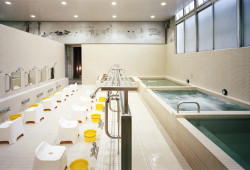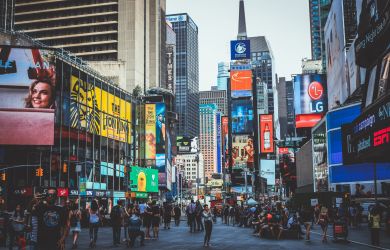
Originally published on metropolis.co.jp on December 2009
At the headquarters of the Hakuza Hikarigura company, master artist Satsuki Morishita is taking a class of rank novices through the intricate steps of making a painting from fine gold leaf. As she painstakingly lifts a sheet measuring just a tenth of a micron in thickness (a single fiber of wool is about 200 times thicker), her dexterity and skill boggle all the senses at once.
My own efforts at creating a pair of rabbits from differently colored sheets of gold leaf are rather less impressive. The eyes—made of a gold alloy—are out of place, and the legs sag like bottle-tree trunks. Gold-leaf art, apparently, is not my forte.
But gold is certainly Kanazawa’s. From golden chariots to the world’s first gold leaf-plated house, the precious metal seems to be everywhere. Today, the city on the west coast of Japan is said to produce over 90 percent of the world’s total output of gold leaf.
Kanazawa’s domination of the industry dates back to the 16th century, when the local feudal lord, Maeda Toshiie, brought back the secrets of gold-leaf production from Korea. The regional warlords soon set up a gilders’ association, and enforced strict regulations controlling production and sale throughout Japan.
Following the Meiji Restoration of 1868, governmental controls on the industry were lifted. New techniques were developed, including the production of an interleaf paper between which gold-leaf sheets are stacked and then hand-beaten. This technique, known as enzuke, requires painstaking care.
Experts claim that soft water is essential for producing gold leaf, and Kanazawa’s twin Asanogawa and Saigawa rivers provide just what’s needed. By 1880, numerous workshops had sprung up near the banks of both rivers, employing over 1,500 craftspeople. Even today, the city boasts over 200 manufacturers with around 1,000 employees. Three of them—Hakuza Hikarigura, Hakukokan and Kanazawa Katani, along with the Kanazawa Yasue Gold Leaf Museum—offer classes in gold-leaf design for ¥500-¥1,100, with the prospect of taking your creation home at the end, however misshapen.
Like most visitors to the premises of Hakuza Hikarigura, I’m amazed at the Gold Warehouse, a two-story structure coated both inside and out with gold-platinum alloy leaf. This alloy, a world first, is said to produce a metal skin that will never fade or change color—and the effect is stunning.
Later, I partake in a gold-trimmed meal at the nearby Bistro Kamiya Ichibe. Kanagawa’s cuisine, known as kaga ryori, draws heavily on the city’s rich seafood bounty and a ready supply of mountain vegetables and fungi. The Bistro features sashimi of sea bream and Spanish mackerel, a wide variety of mountain vegetables including yams and ostrich fern shoots, and finally the house specialty: a dessert of sweet tofu with sesame, cheese and cream. All are garnished with gold.The signature metal also features at Kanazawa’s museums, the most striking of which is the 21st Century Museum of Contemporary Art. From the golden statue of a “Man Measuring the Clouds” atop the roof to the “swimming pool” where you get to walk underwater, nothing in this place is quite what it seems, or even seems to seem. The circular museum aims “to reinvigorate Kanazawa and its citizens,” a function also served by the many bars in the nearby Katamachi precinct.
For a final take on Kanazawa, I’m privileged to get thoroughly lost in the Teramachi temple area, just across the Saigawa river. From Myohoji to the bonsai gardens of Hokoji, there are more than twenty temples in the precinct, imbuing it with a very special aura. Not all are open to the public, but most will offer a warm welcome. This is par for the course in Kanazawa, a city whose very name—meaning “Golden Marshes”—rings out across the island of Honshu like a gold-plated bell.
The author was a guest of Kanazawa City and the Japan National Tourist Organization (JNTO).
Kanazawa can be reached by taking the Joetsu shinkansen to Echigo-Yuzawa, then changing to the Hakutaka limited express (¥12,410, approx four hours). Willer Express runs a number of night bus services, with tickets starting at ¥4,300 (http://willerexpress.com/en/). Ryokan Yuyarurusaisai, a newly-renovated luxury inn overlooking the Saigawa river, is highly recommended (7-1 Kiyokawachyo, Kanazawa; tel: 076-280-5333; www.yuyarurusaisai.com/c10.html), as is a meal at Bistro Kamiya Ichibe (1-8-21 Katamachi, Kanazawa; tel: 076-262-6006). The best guide to Kanazawa is found in Gateway to Japan by June Kinoshita and Nicholas Palevsky. For further information, see www.kanazawa-tourism.com.




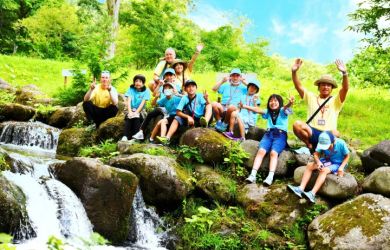
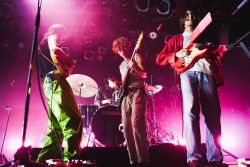
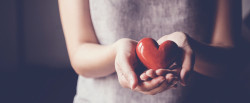
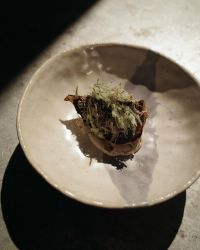
①_Panoramic-ViewDay1-Medium-390x250.jpeg)
